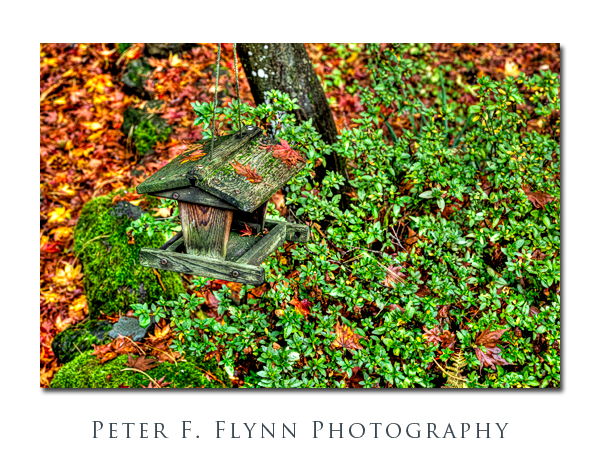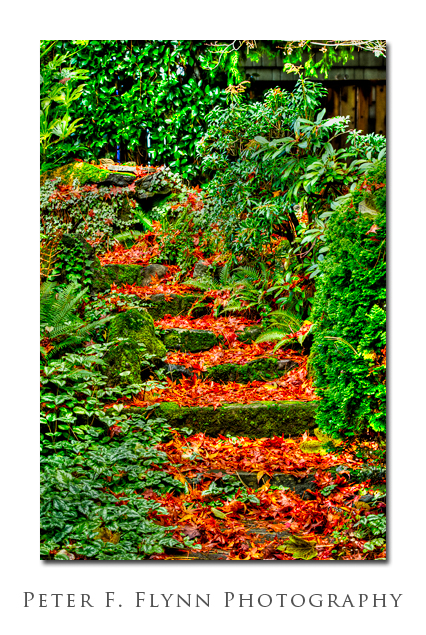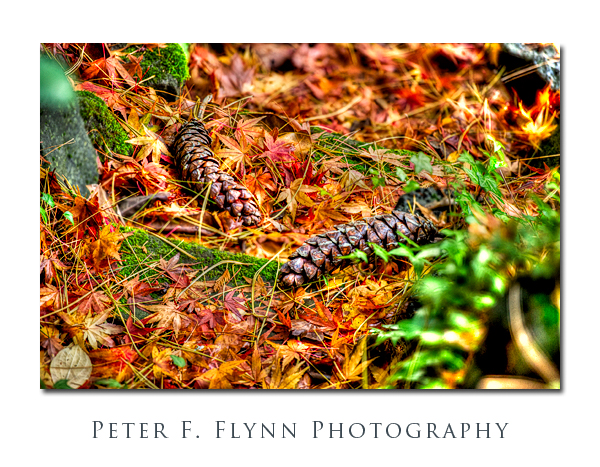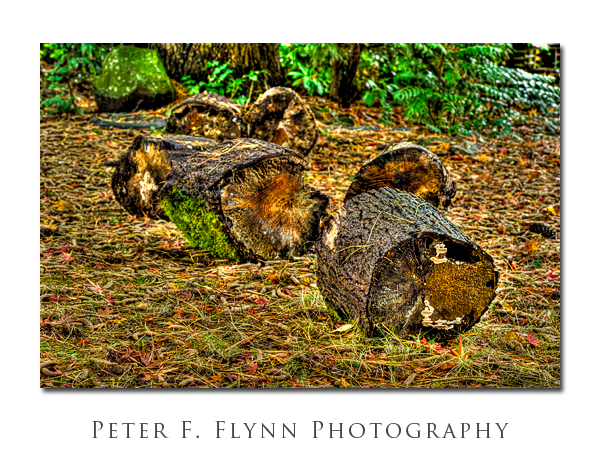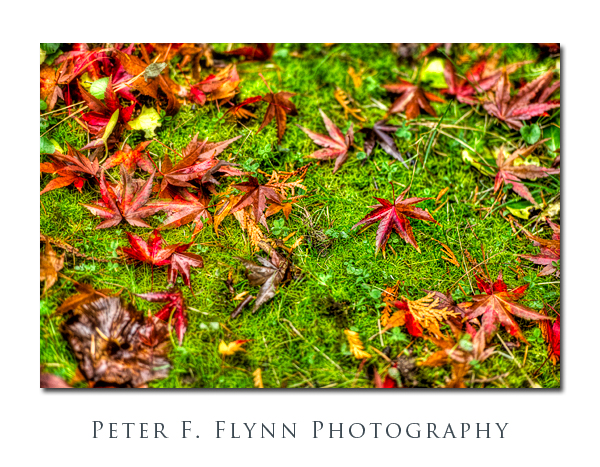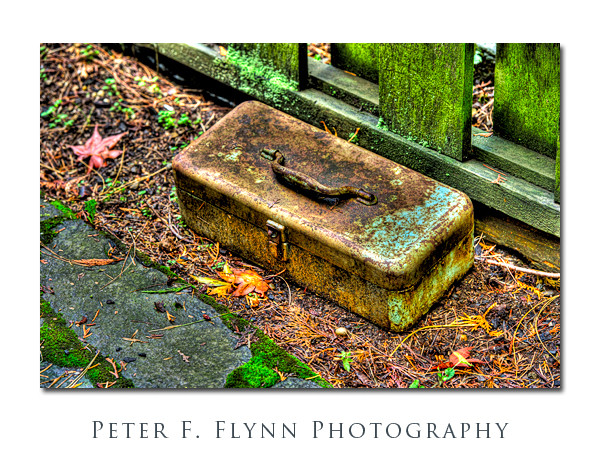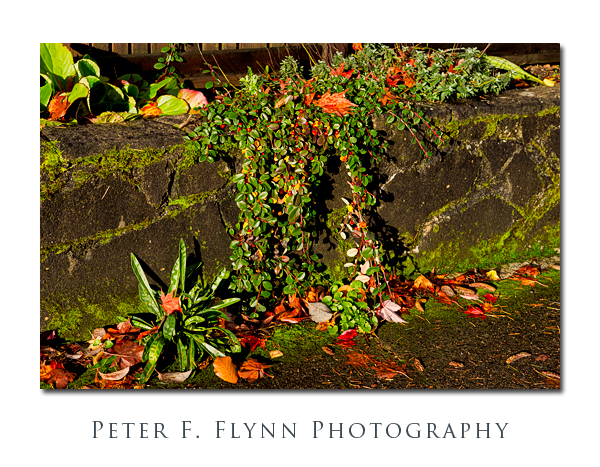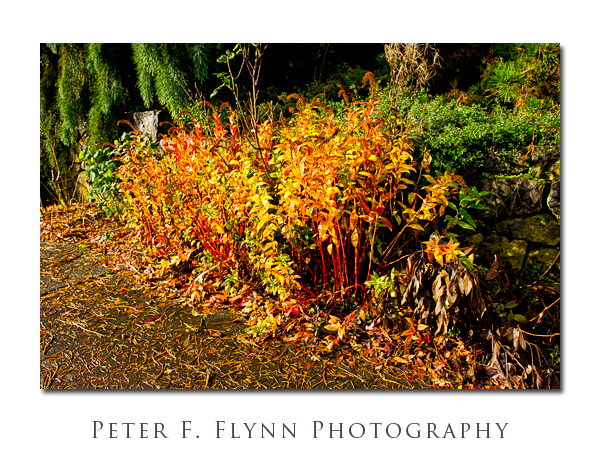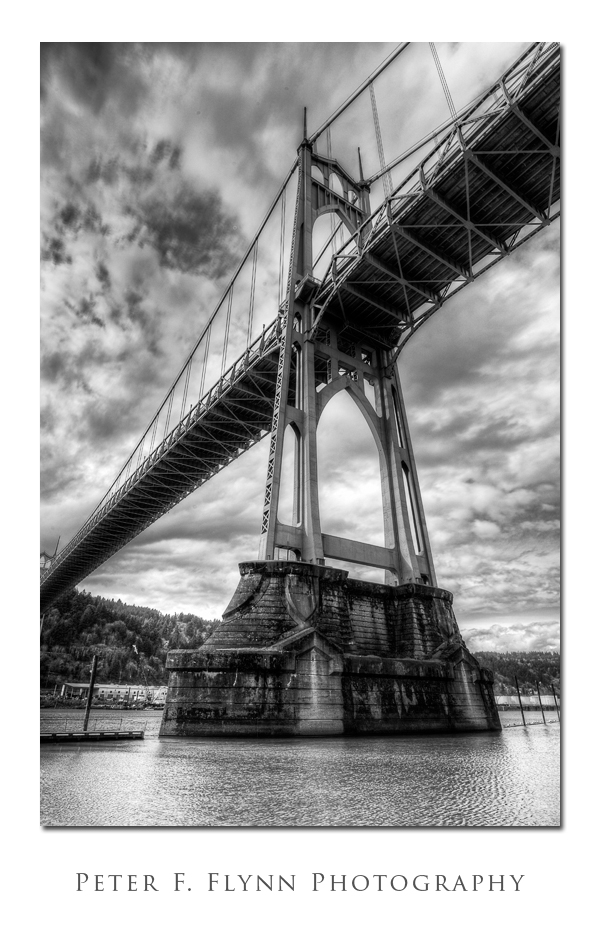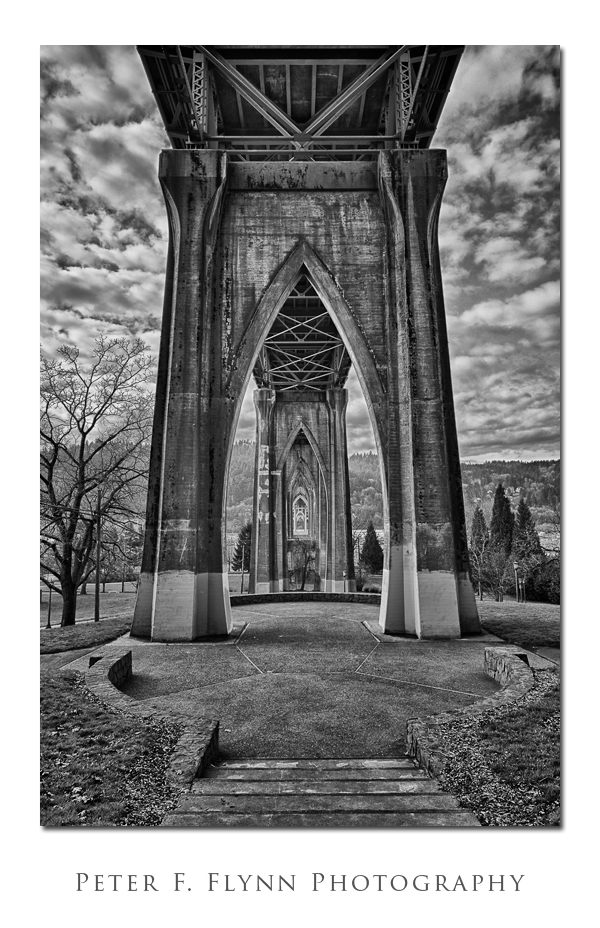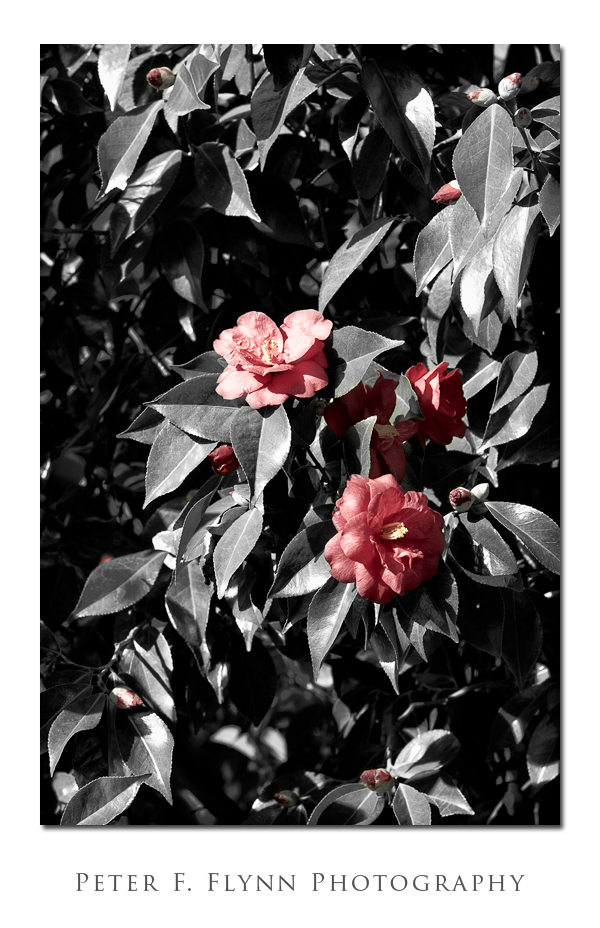Hidden amongst tall firs a few miles east of the Willamette River, there is a secret garden. Meredith’s garden. From the outside, it’s anyplace SE PDX, but inside, well inside, it’s a magic world.
As you can see, ‘magic’ is pretty much the same thing as trees and bushes, moss and leaves, and wet, plenty of wet.
The images above were recorded at around 12:00 PST on November 25, 2011, using the Nikon D3s and the AF-S NIKKOR 70-20mm f/2.8G ED at various focal lengths. All of the images in this entry were converted to HDR using Photomatix Pro 4.1.4: Both single-shot and bracketed input images were used. I currently favor Photomatix over HDR Efex Pro. Both are excellent software packages, and although the Nik-ware provides a huge array of default styles, only a few of them are actually very useful. By contrast, Photomatix seems to produce images with greater depth and pleasing contrast and color saturation with little effort. The recent addition of real-time hints for parameter functions in Photomatix is very useful. Additional contrast and saturation, as well as increased local/micro-contrast were applied using Kin Viveza 2 and Nik Color Efex Pro 4.
Copyright 2011 Peter F. Flynn. No usage permitted without prior written consent. All rights reserved.
